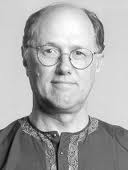CAN WE HAVE A NUCLEAR-FREE WORLD?
By George Wolfe
On March 23, 1983, President Ronald Reagan proposed a space age defense system that would intercept and destroy ballistic missiles carrying nuclear weapons. His idea was to render nuclear weapons and their delivery systems “impotent and obsolete.” Dubbed as his “Star Wars speech,“ this gave birth to the hope that one day we would have a world free from nuclear weapons.
Five years ago, President Barrack Obama, speaking in Prague on April 5, 2009, issued another call for a nuclear-free world.
President Reagan’s Star Wars defense was hardly foolproof, since it would motivate a country to develop ways to disable satellites equipped with powerful lasers. But it does awaken us to the dangers of having a world where the nuclear arsenals of the United State and Russia are still poised and ready to launch.
The arms race between the United States and the Soviet Union, and the size and power of their nuclear arsenals, became the focus of protests during the Cold War. Both superpowers had deployed enough nuclear weapons to destroy each other ten times over. Referred to as overkill, public momentum was created for a moratorium or freeze to halt the testing, production, and deployment of more weapons, and for the United States and USSR to reduce their arsenals.
Nuclear freeze activists also raised public awareness of the tremendous cost of atomic weapons and the resulting diversion of funds from humanitarian causes to support weapons programs.
Nuclear weapons are offensive weapons of mass destruction. But there is a paradox in that they can serve as a deterrent to pre-emptive invasion or pre-emptive strikes between nuclear powers. This deterrence capability is undoubtedly behind Iran’s and North Korea’s motivation to develop nuclear weapons. Would the United States have launched its pre-emptive invasion of Iraq if Saddam Hussein had possessed nuclear weapons? There is little doubt the answer is “no.”
Then there is the concern that if the current nuclear powers eliminate all their nuclear weapons, they will be vulnerable to rogue countries developing nuclear weaponry and holding the rest of the world hostage to nuclear attack. This is similar to saying, “If guns are outlawed, only outlaws will have guns.” While this argument may have merit with regards to small arms weapons, it does not hold up when applied to nuclear weaponry. Nuclear weapons and their delivery systems require highly sophisticated and expensive technology. With today’s intelligence gathering technology, we are quite able to detect such development well enough in advance to intervene politically, economically or militarily.
There are two overriding reasons today for ridding the world of nuclear weapons.
First and foremost is the possibility that nuclear weapons could fall into the hands of terrorists. This was a major concern of former Republican U.S. Senator Richard Lugar. If a country like Pakistan would fall to an extremist group like ISIS, they could gain access to its nuclear arsenal.
The second reason is that a nuclear exchange could occur by accident.
In a nuclear attack, the missiles, once launched, could reach their target in as little as a half an hour. This creates the necessity for the defending country to respond within thirty minutes or risk losing the ability to launch a retaliatory strike. Referred to as launch on warning, this defense strategy opens the possibility of a false alarm triggering a nuclear war. The nation that believed it was under attack would be prone to launch prematurely if it misread a radar screen or miscalculated the reading on a satellite sensor.
A world free of nuclear weapons is a noble and reachable goal. Because of the growth of terrorism and the risks of an intelligence error, it is in the interest of all nuclear powers to collectively accelerate efforts to create a nuclear-free world.
George Wolfe is Professor Emeritus at Ball State University and former Director and Coordinator of Outreach Programs for the Ball State University Center for Peace and Conflict Studies. He also chairs the Muncie Interfaith Fellowship, is a trained mediator, and is the author of The Spiritual Power of Nonviolence: Interfaith Understanding for a Future Without War.



